Common tansy identification and control
About this weed
Common tansy is a non-regulated Class B noxious weed. This means due to how widespread it is, property owners are not required to control this species on their property, though it is encouraged.
Common tansy is known as Tanacetum vulgare, and it is in the aster (daisy) family.
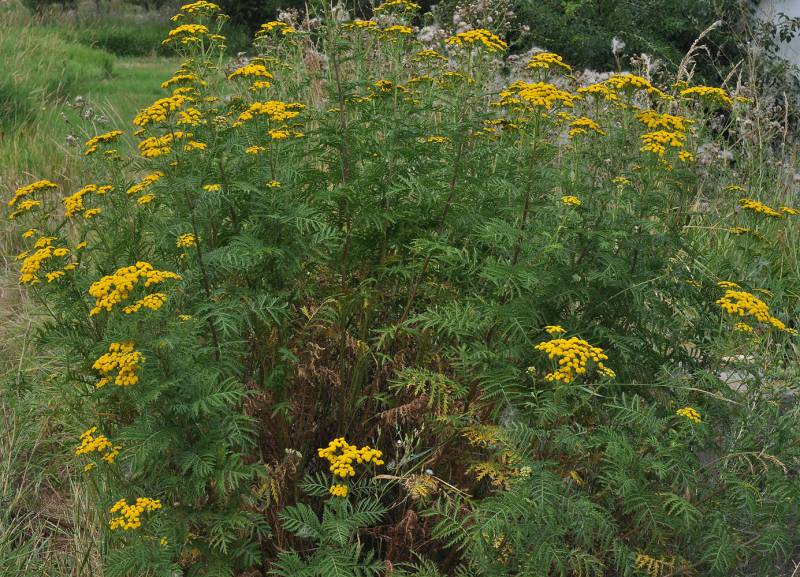
Common tansy is poisonous to humans and livestock, though it is seldom grazed due to its strong odor. It forms dense patches in pastures and, being unpalatable, reduces pasture productivity. Common tansy degrades wildlife habitat by displacing forage plants and reducing species diversity. It was brought to the Americas in the early 1600 by Europeans who used it for medicinal gardens. It in now naturalized in most of the US and southern Canada.
Plant description
Common tansy is a perennial (2 or more years life cycle) native to Europe that reaches 1 to 5 feet tall and has fern-like foliage and yellow button-like flowers. It has a strong odor, similar to the scent of camphor. It generally grows in full sun along roadsides, streambanks, in ditches, and in pastures.
It has button-like flowers with no daisy-like ray petals. The flowers form in dense clusters between July and September.
The leaves are alternate and pinnately compound (leaflets arranged on either side of a central stalk). They are toothed and appear fern or feather-like and have a strong smell when crushed.
Common tansy mostly reproduces by creeping rhizomes (horizontal roots that sprout new plants) and by seed.

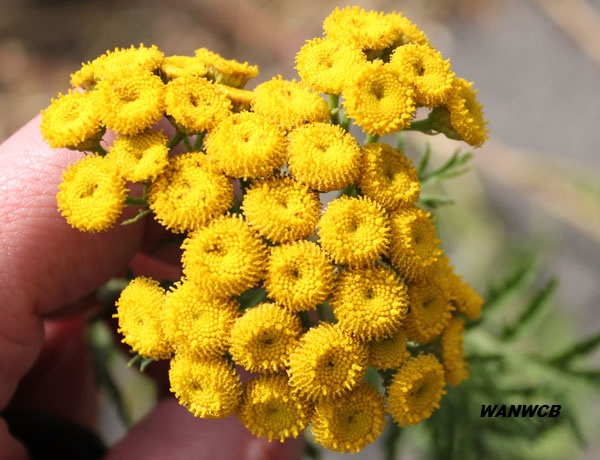
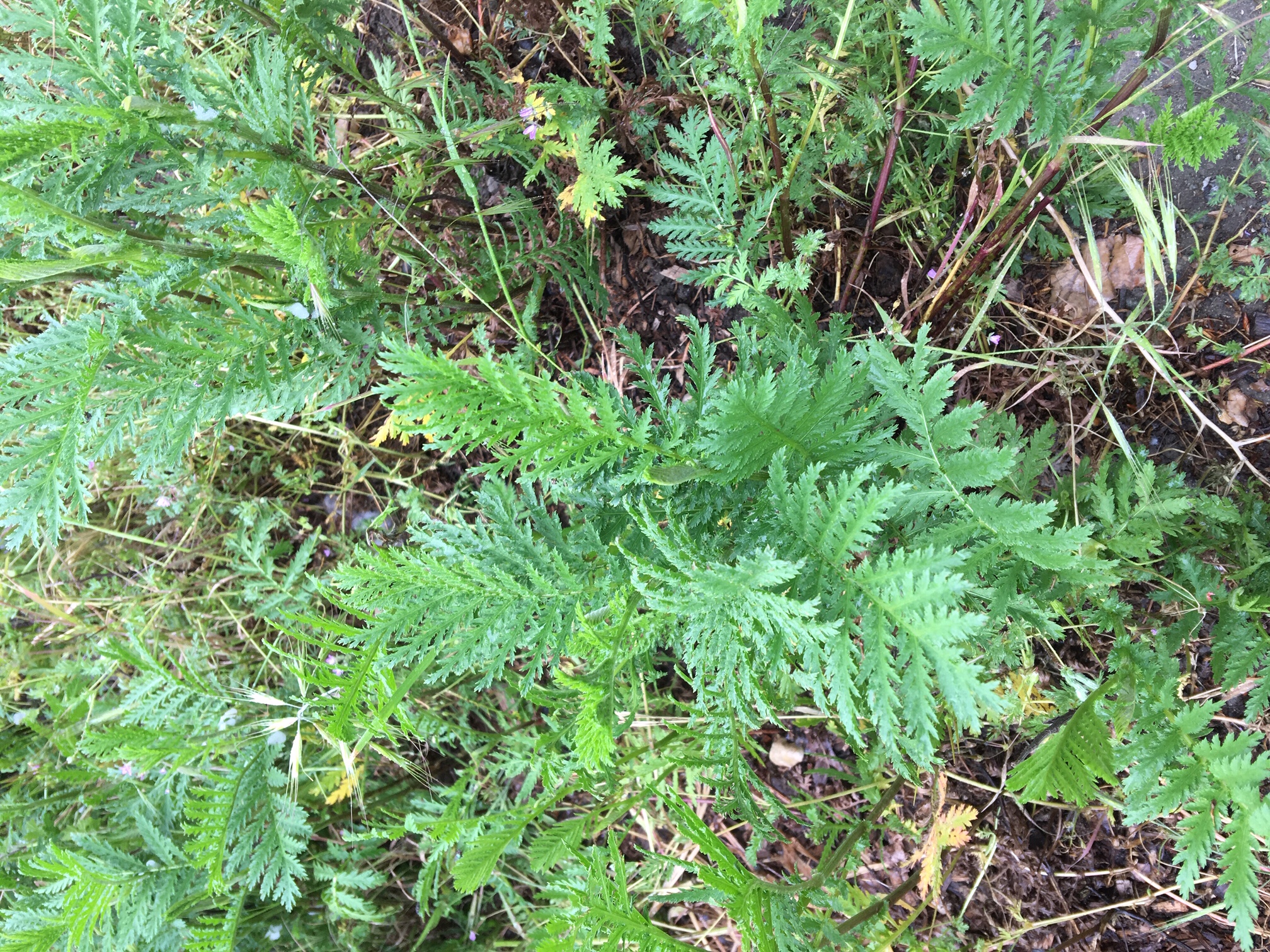
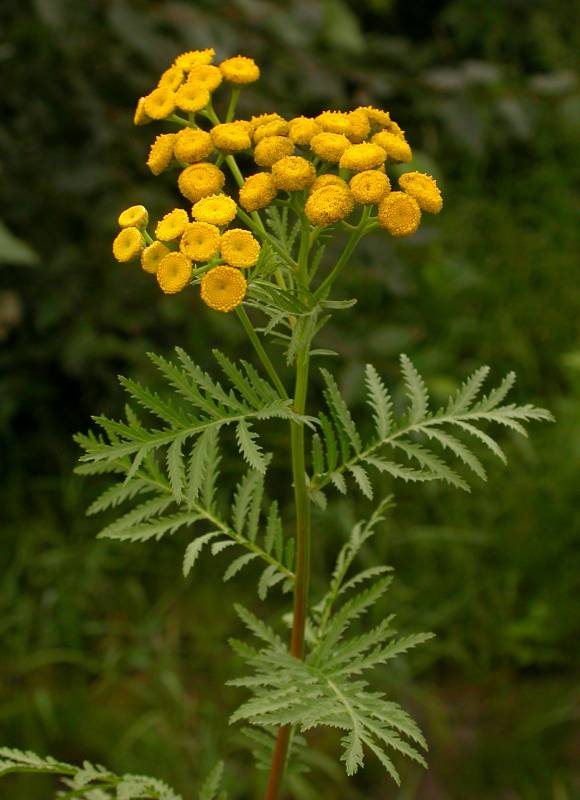
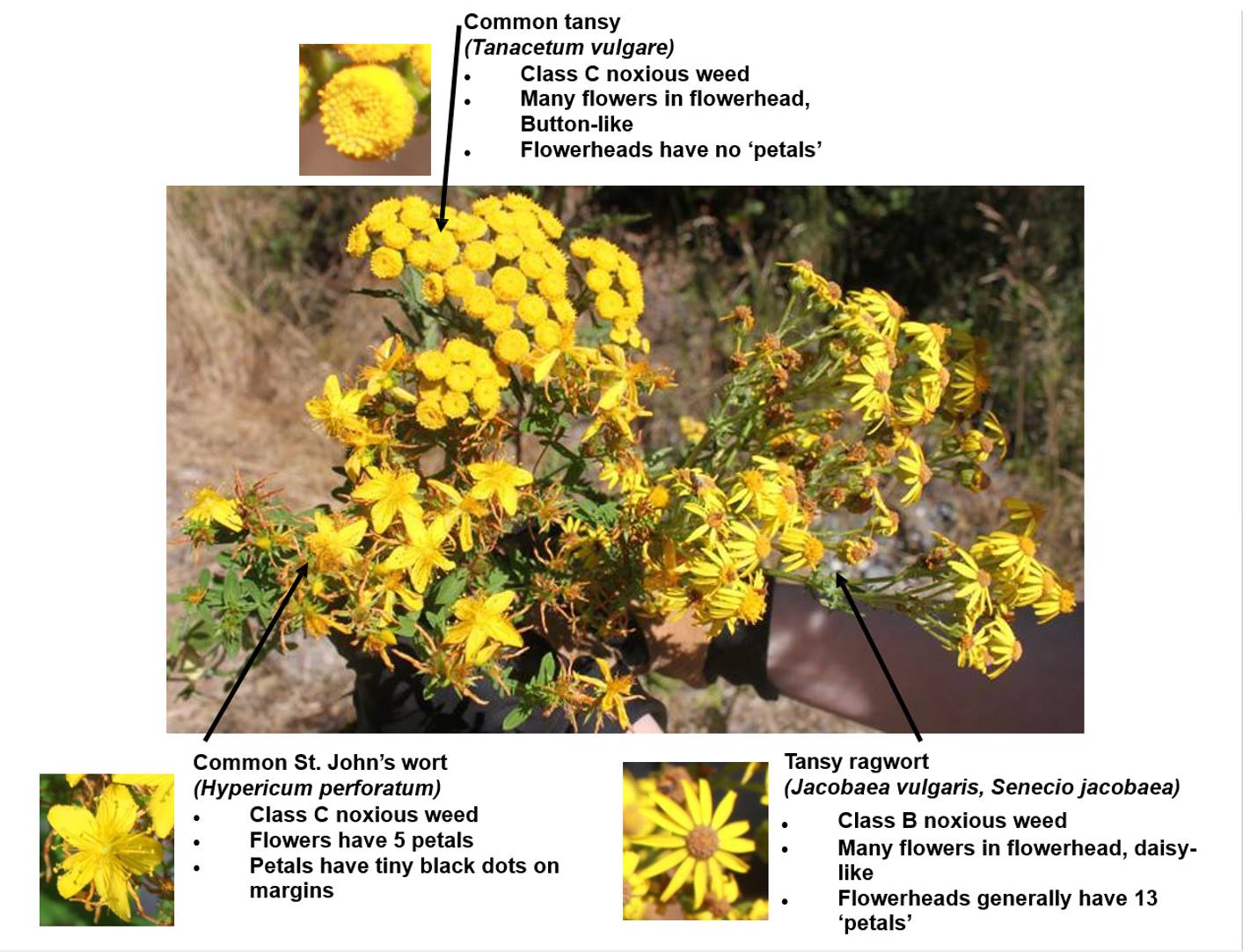
Be aware of look-alike plants
More information about some of the plants common tansy is often confused with:
Tansy ragwort, Jacobaea vulgaris
Common St. Johnswort, Hypericum perforatum
When in doubt, take photos and report them on iNaturalist.
What to do if you find it
Property owners in King County are not required to control common tansy because it is so widespread. We are not generally tracking infestations.
However, the King County Noxious Weed Control Board encourages property owners to remove common tansy where possible and to avoid introducing it to new landscapes. We can provide advice on how to control common tansy.
Control methods
We recommend using a combination of methods to control noxious weeds. In areas with few weeds, it is important to act quickly before they become harder to control. Make a long-term plan as it often takes several years to get rid of most weeds. Start in the least infested areas first and then move into more heavily infested areas.
For more in-depth control information read Best Management Practices (BMP) for common tansy (185KB)
Manual control
Individual plants and small infestations can be hand-pulled only if the whole root is removed. This is easier to do if the soil is damp. Spring is the best time of year for manual control. Continually monitor and remove any resprouts. Wear gloves when handling plants.
Mechanical control
Mowing alone will not kill the plants but can reduce seed production. It must be done repeatedly to prevent plants from flowering again in the same season, or in combination with herbicide treatment. Cultivation can effectively suppress common tansy.
Cultural control
Reduce soil disturbance and encourage healthy pasture soils and native plant communities to maintain long term control. Burning is not recommended for controlling common tansy.
Chemical control
Stay safe when using herbicide:
- Always read the label before use.
- Wear a long-sleeved shirt, long pants, shoes, and eye protection.
- Follow state and local regulations.
It is most effective to apply herbicides in the spring. Glyphosate is effective when applied in the early flower bud stage. It is non‐selective and will kill non‐target vegetation, including grass. Have a re‐vegetation plan to prevent common tansy from re‐infesting the area.
Use selective broadleaf herbicides when common tansy is growing in a grassy area, and before flowers appear. Selective herbicides that are effective on common tansy include dicamba, metsulfuron, chlorsulfuron. Re‐treatment the following year is necessary to control new plants. Monitor and remove any resprouts for at least four years after the initial treatment.
See the PNW Weed Management Handbook for the most up to date and specific method for chemical control of common tansy.
Disposal instructions
Put flowering or seeding stems in the yard waste, trash, or dump at a transfer station. Backyard composting of seeds is not recommended for noxious weeds. Non‐flowering foliage can be composted but discard root wads to avoid re-rooting. If disposing of plants on site, leave the roots up and chop them with a shovel to avoid re‐rooting. Plants should not be left near waterways, shorelines, roads and un‐infested areas. Never dump yard waste in parks or natural areas.
Noxious Weed Disposal - Washington State Noxious Weed Control Board

 Translate
Translate